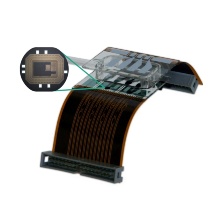Nitric oxide (NO) sensors are of great interest because of the role NO plays in regulating chemical and biological processes, e.g. relaxation of smooth muscle tissue, neurotransmission, and immune response. A healthy human exhales between 4 and 200 ppb NO. A person suffering from an inflammatory desease, like cancer or asthma can easily exhale a ten times higher concentration. NO can therefore serve as a marker for the monitoring of a desease.
We propose and demonstrate the applicability of a new kind of optogalvanic sensor based on Rydberg excitations, which might show advantages compared to already existing detection methods.
We are using two pulsed dye-lasers, tuned to specifically excite Rydberg states of NO. Since the electron of the Rydberg excited NO molecules is only weakly bound, already low energy collisions at thermal temperatures with other atoms are sufficient to ionize a Rydberg-excited NO molecule. The emerging charges can then be measured as a current. Because the lasers are ideally narrowband is the occurrence of a current a clear indication of the presence of the molecule in question.
In a very first experiment we demonstrate the detection of 10 ppm NO in a buffer gas. This sensor can be used at room-temperature and even at normal atmospheric pressures. With the achieved detection efficiency an detection limit of 5 ppb at a realisitic medical examination seems to be in reach.
J. Schmidt, M. Fiedler, R. Albrecht, D. Djekic, P. Schalberger, H. Baur, R. Löw, N. Fruehauf, T. Pfau, J. Anders, E. R. Grant and H. Kübler, "Proof of concept for an optogalvanic gas sensor for NO based on Rydberg excitations", Appl. Phys. Lett., 113, 011113 (2018).
or on arXiv: https://arxiv.org/abs/1801.09453


